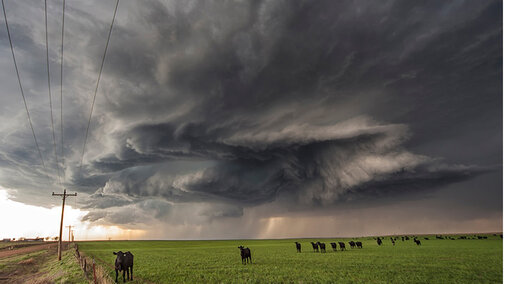Poisonous Pasture Plants
While poisonous plants are generally not as problematic in Nebraska compared to other western states, they can exact their toll on livestock enterprises, and many times the losses are unrecognized.
There are 17 species listed as primary toxic plants that can be found in Nebraska. Toxic plants contain or produce substances injurious or lethal to animals. The amount of plant material consumed by the grazing animal before death or poisoning symptoms appear does vary by species. Poisoning symptoms will vary depending on the toxic compound in the plant but may include difficulty breathing, excess salivation, nervousness or staggering. Many poisonous plants are avoided by the animal, but a scarcity of forage, such as under drought conditions may lead to a situation where they are consumed.
There are some species, such as prairie larkspur, where grazing animals may select for them when they are flowering (mid-June to early July). Other relatively common poisonous plants in central and western Nebraska include Riddell groundsel, Lambert crazyweed, wooly locoweed and chokecherry.
Poison hemlock and spotted water hemlock are common statewide. These two species prefer moist areas in pastures, creek banks, ditches and disturbed sites.
If you suspect a poisonous plant problem in your pastures, be sure to get a positive identification of the plant. When control or removal of the plants is not possible, it may be best to move livestock to a different pasture.
Nebraska Extension does have a great resource called Nebraska Plants Toxic to Livestock (EC3037); it can also be obtained through your local extension office.
Hail in Pasture and Hay
When hailstorms hit, row crops often get the most attention, but perennial forages can take a beating too. So, what should you do when hail strikes your pasture or hay field?
The timing of the hailstorm is crucial in assessing its impact on forage crops. While perennial forages are resilient — they do withstand regular grazing and haying — hail can cause significant yield loss.
In pastures, if standing forage is now on the ground, it's best to move animals to allow plants to recover. If regrowth occurs, graze appropriately to prevent overuse. However, if dry conditions follow the hail, regrowth might not happen, and you may need to keep animals off until moisture returns.
For alfalfa fields, damage assessment and timing are key to recovery. Work from the University of Wisconsin advises that fields with more than two weeks before harvest can usually be left alone, with some yield loss expected. If terminal bud damage exceeds 50% in these fields, focus on managing and harvesting the regrowth.
If your alfalfa has less than two weeks before planned harvest, you can proceed with normal harvesting, expecting some yield loss. For severely lodged crops, wait three to four days for plants to right themselves. Disk mowers are better at picking up lodged crops than sickle bars, but for both, tilt the bar or disc forward for better forage pickup. If damage is severe and the yield isn't worth the effort, focus on managing and harvesting the regrowth.
Hailstorms are part of life on the Plains. When they impact your forage production, assessing the damage and adjusting your management strategy can help you make the best of a tough situation.
Irrigating Alfalfa In-season
Irrigation season usually is in full swing during early June. However, spring rains have reversed drought conditions across most of Nebraska for the first time in four years. So, what are alfalfa irrigation suggestions for summer?
As a perennial crop, alfalfa does not have specific critical growth stages for water stress like most traditional crops. When moisture stressed, the plant will slow or stop growing and go dormant. Then, when water becomes available, growth resumes.
Since alfalfa has a longer growing season, it uses more water annually compared to other crops. Conversely, over-watering alfalfa can result in plant injury, disease, and possibly weed invasion. Irrigation can be challenging due to multiple harvests preventing watering for about seven to 10 days per growth cycle and frequent heavy equipment traffic compacting soils. To reduce compaction, stop irrigating two to three days before cutting the alfalfa, and irrigate again when alfalfa regrowth begins. Heavy irrigation of alfalfa stubble may encourage weed growth.
Irrigation scheduling efficiency can be improved with using evapotranspiration (ET) gages or soil moisture monitoring. Accurate weather forecasts can also allow growers to take full advantage of rainfall events and reduce irrigation applications.
As temperatures rise, daily water use is also increasing. Generally, the most yield impacting irrigation occurs just before the second cutting followed by the third and fourth growth periods, typically requiring six to seven inches of irrigation. Peak water usage is about 1/3-inch per day in July and August. However, hot, windy and dry days can move the maximum water demand up to ½-inch per day.
Our UNL NebGuide “Irrigation Management and Crop Characteristics of Alfalfa” (G1778) provides more details. Additional information can be found on CropWatch and UNL Water.

